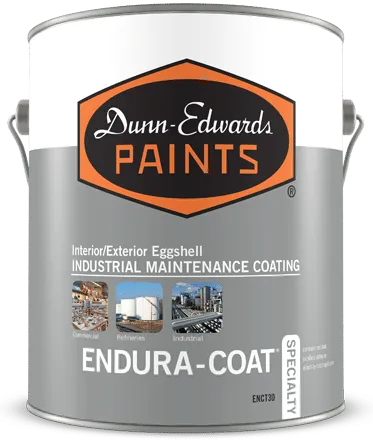How to Paint Moldings and Trim
Do I Paint Trim or Walls First?
When it comes to painting a room, we recommend painting the trim first before tackling the walls. This approach helps ensure clean, crisp lines where the trim meets the walls, and it’s easier to cut in along the edges with a brush before rolling on the wall paint.
How to Paint Baseboards Step-by-Step
Prepare the Area
Before painting baseboards, proper preparation is crucial to achieve clean and professional-looking results. Use masking tape to carefully cover the areas where the baseboard meets the wall and floor, ensuring straight lines and preventing paint from getting on adjacent surfaces. Lay down drop cloths or plastic sheeting to protect the floor from spills and splatters, making sure to secure them in place to prevent slipping hazards.
Prepare the Trim
To properly prepare trim before painting, start by lightly sanding the surfaces with fine-grit sanding sheets to remove any existing paint buildup or imperfections. This will help the new paint adhere better. Next, fill any holes, cracks, or gaps with patch caulking, allowing it to fully dry before sanding smooth for a seamless finish.
Prime the Trim
Be sure to prime trim before painting as it helps the topcoat of paint adhere better and last longer on the surface. To prime, use a high-quality primer formulated for trim and apply an even coat with a brush or small roller, ensuring full coverage on all surfaces including corners and edges.
Paint the Trim
Now you’re ready to paint! When painting moldings and trim, use an angled brush to get into the corners and crevices for full coverage. Apply paint in thin, even coats in the direction of the wood grain. Allow each coat to fully dry before applying the next for a smooth, professional finish. Then, remove the masking tape slowly and carefully to avoid damaging the paint.
View Transcript
| Video/Text on-screen | Copy |
|---|---|
| Opening - Dunn-Edwards logo | [Music] |
| Man Talking | Hi. I'm Cole Schaefer professional painter and welcome to Dunn-Edwards paints how to paint video series. You know a nicely painted room is one that has clean lines and looks polished. Moldings and trim are a big part of what gives a space its style so be sure to give them the attention they deserve. In this video we'll show you how to properly prep and paint moldings and trims so you can complete the look of your space. Moldings and trim come in a variety of forms like base moldings, door casing or crown molding. Good preparation and painting techniques will make these architectural details really accent a room. Now in order to paint your moldings and trim you'll need the following supplies along with your Dunn-Edwards premium paint. |
| Supplies Needed Clip | Masking tape, a paintbrush, buckets, sandpaper, spackle, putty knife, caulk and caulking gun, dust mask goggles and gloves and drop cloths and of course all these supplies are available at your neighborhood Dunn-Edwards paint store. |
| Man Talking | So before you begin priming you want to fill in any holes with spackle and santim smooth. Next you'll want to inspect the molding and lightly sand it to improve adhesion and ensure that you have a smooth surface to paint. |
Painting Molding and Trim Clip | Now take a look at your trim if there's a gap between the moldings in the wall or cracks if the corner joints you may want to fill them in with caulking using a caulking gun to get a smooth finish. With caulking get your finger tip wet and softly glide it over the top of the caulking bead to make it smooth, always keep a wet rag or bucket of water on hand when working with caulking. For the next steps grab your masking tape but before you begin taping remove any dust with a vacuum or damp cloth to help your tape stay put. Now you're ready to mask off your walls so you don't get paint on them, now this is especially important if you're using a different color than the wall paint. Oh and be sure to run your finger along the edge of the tape to prevent paint from bleeding underneath to give you a good clean crisp straight line. So to protect your floors place Kamath drop cloths underneath any is to be painted, oh and you might want to consider using carpet guards when painting baseboard trim in carpeted. Now before you paint don't forget to prime any patched areas or unfinished areas if your molding or trim was painted previously with an oil-based paint you'll need to prime it to get good adhesion. |
| Man Talking | If you're not sure if it was painted with oil-based paint simply play it safe and prime it anyway. Now make sure the primer is good and dry then check it to see if it needs to be sanded before painting if it does use a 220 grit or higher sandpaper to prevent any sanding marks from telegraphing through to the finish. Once you're done with these first few steps you're now ready to paint. And when you've completed and the paint is dry remember to remove the masking tape slowly do not leave the tape on the surface too long as it could be harder to remove without damaging the paint. Now if you're looking for that smooth oil-based finish consider using Dunn-Edwards Arista Wahl premium interior paint available in both semi-gloss and gloss sheen Arista Wahl is easy to apply and provides a nice finish of traditional oil-based paint but has less odor dries faster and allows for easy cleanup with water. So for all of us here at Dunn-Edwards paints I'm Cole Schaefer thanks for watching and happy painting. |
| Closing - Dunn-Edwards logo | [Music] |






